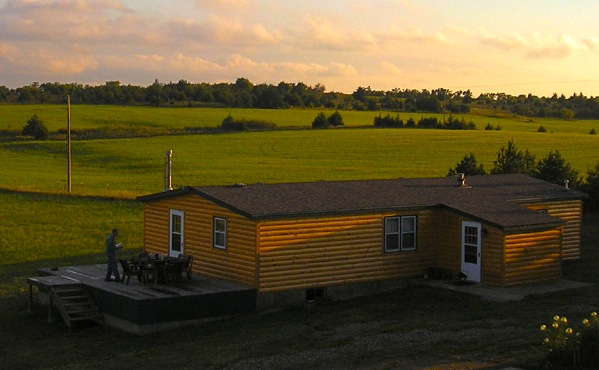This fall I’ll be spending several weekends in work clothes, putting the finishing touches on a house I’ve been remodeling in rural north-central Kansas. When my work is finished, I’ll officially move into the first house I’ve ever owned.
Home ownership isn’t all that extraordinary for a 36-year-old American, but my situation has a twist: For the past 13 years, I’ve been traveling the world, wandering my way across six continents while living out of a backpack. “Home,” for me, has been a slippery concept—loosely tied to, say, the rooms I rented during a two-year sojourn in South Korea, or the family that hosted me while I did volunteer work in India, or even the lingering affection I always held for the America I’d left behind.
My travel addiction can be traced back to early adulthood, when I used money from a post-college landscaping job to fund an eight-month journey across the United States. As I explored the American back-roads that year, I came to realize just how easy and rewarding long-term travel could be. Given a little awareness and discipline (and the willingness to forgo a few comforts), I found that life on the road could be just as safe, no more expensive, and twice as exciting as life at home.
Over the next several years my wanderlust took me around the globe: to Korea, where a teaching stint earned me more travel funds (and taught me how to live within another culture); to Eastern Europe, where I witnessed the post-Communist renaissance of countries like Poland and Hungary; to the Middle East, where I experienced an exuberant friendliness that defied the region’s media stereotype. These ongoing travels continually reminded me of a simple truth: Time is our truest form of wealth, and how we spend that time is what truly counts in life.
As I neared my mid-thirties I was working full-time as a travel writer, but I found myself longing for a respite from my ongoing cycle of travel. Fortunately, my years of wandering had offered me vital clues about how to approach a settled life. Around the world—in cities and in the countryside, in rich societies and poor—people seemed happiest when they were close to family. In Ecuador, I’d seen four generations of relatives living as next-door neighbors along a single block; in Thailand, I’d known extended families that’d pooled their collective resources to start businesses. Thus, when my sister alerted me about the 30 acres of grazing land for sale near her farm in Saline County, Kansas, I didn’t hesitate: I talked my parents into buying it with me.
My mother and father, who’d recently retired from their jobs in Wichita, soon moved into the main house, which sat on a slight hill at the back of the property. The smaller house—my house—a 1970s-era double-wide that hugged the western edge of the property, needed major renovation work before it could become livable.
Years of travel had taught me numerous skills—how to shop for food when you only know 10 words of the local language, for example, or how to perform certain bathroom functions in countries that don’t sell toilet paper. Unfortunately, I’d learned very little about carpentry, so my first few weeks of house renovation were as bewildering and exhilarating as a visit to a strange country.
Noting my unfamiliarity with the language of home improvement, my mother helped me shop for paint that would cover the water stains on my ceiling; my sister assisted me as I tore out the moldy old carpeting. My brother-in-law covered the flimsy old wall panels with sheetrock; my father installed a layer of plywood to brace the sagging floors. I tagged along behind them like a novice tourist—brushing paint, hammering nails, steadying ladders; tenuously familiarizing myself with this exotic new way of life.
This fall, my family and I will cap this process by tearing the cracked vinyl siding from the outside of my house, and nailing up weather-treated pine boards. I will, for the first time, have a home of my own.
And, while I will never stop traveling to faraway lands, I look forward to this sublime new destination on my itinerary—an attraction laced with the subtle pleasures of standing still and getting to know a single location.
The prairie scenery beyond my front deck may never be listed in travel guidebooks, but I’ve come to find it as thrilling as the view from Machu Picchu, or the distant valleys of the Sinai.

